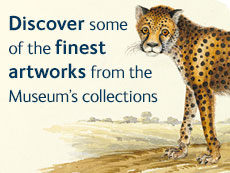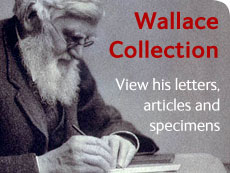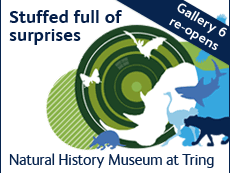Collections at the Museum
The life and earth science collections of the Museum comprise 80 million specimens or items, gathered over 400 years. The collections cover virtually all groups of animals, plants, minerals and fossils from all across the world, and even the universe. Find out how the collections started, who looks after them and how they affect our everyday life.
-

Introduction to our collections
Discover key facts and figures about this impressive data source and how it serves as a window to both our past and future.
-

Museum treasures
Explore exceptional objects and specimens from the collections at the Museum, and uncover the fascinating stories behind them.
-

Who were the first collectors?
The Museum owes its beginnings to Sir Hans Sloane, an 18th century collector. He acquired over 80,000 items, forming the single largest collection of any individual in Europe.
-

Why are the collections important?
The Museum's collections serve many purposes, from educating and inspiring visitors to solving problems in agricultural, medical and forensic science.
-

Our curators
Once specimens arrive at the Museum, they need to be prepared and labelled by curators. But the majority of a curator's time is spent maintaining and documenting existing collections.
-

Collections in the future
As the Museum's collections continue to grow, it is necessary to improve and expand our storage facilities. Find out more.
-

Virtual library
Read parts of ground-breaking works like On the Origin of Species or browse images of pressed flowers collected by 16th century explorers, all from the comfort of your own computer.
-

Making it part of the collection
Watch these videos, which highlight some of the ways specimens are prepared for our collections, such as plant mounting, pinning and slide preparation.
-

Wallace Collection
The Wallace Collection brings together a remarkable selection of digitised letters, notes, articles and insect specimens collected by Alfred Russel Wallace himself.
-

Slavery and the natural world
Find out what the Museum's collections reveal about the links between slavery and the natural world.
-

Taxidermy at Tring
Derek Frampton talks about how he became a taxidermist and the secrets of his craft. Watch the video.
-

Keeping and caring
How does the Museum organise, preserve and conserve its 60 million life science specimens?
-

How to prepare an edible dormouse
Taxidermist Derek Frampton demonstrates how to prepare an edible dormouse skin for the collections at Tring. Watch the video.
-

Common poppy herbarium sheet
View this herbarium sheet in high resolution and find out more about poppies in the UK.
-

Welsh groundsel herbarium sheet
View this herbarium sheet in beautiful detail and learn about this new species of plant.
-

Sandfly specimen
View this sandfly in high resolution and discover how different species are identified and about the spread of disease.
-
Unrecorded collectors
-

The axe that revealed the age of humankind
How long have humans been living on Earth? A 400,000 year-old hand axe in the Museum's collections was one of the first archaeological finds to offer an answer.



